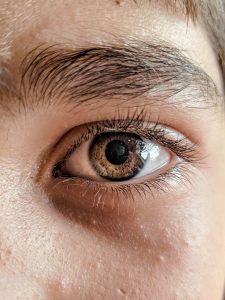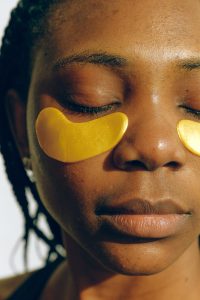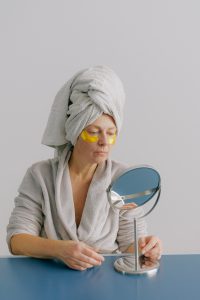Simple Tips for Managing Dark Circles

Dark circles are a common concern for many people, regardless of age or skin type. They can make you look tired, aged, and unhealthy. But what causes dark circles, and what can be done to treat them? In this blog post, we’ll explore the science behind dark circles, their causes, and the most effective treatments.
What Causes Dark Circles?
Dark circles are caused by a variety of factors, including genetics, lifestyle, and environmental factors. Here are some of the most common causes:
- Genetics – If you have a family history of dark circles, you’re more likely to develop them. Genetics can influence the thickness of the skin under your eyes, which can make the blood vessels more visible and cause dark circles.
- Aging – As we age, the skin under our eyes becomes thinner and less elastic, making the blood vessels more visible. This can lead to the appearance of dark circles.
- Allergies – Allergies can cause inflammation and swelling, which can lead to the appearance of dark circles.
- Sleep Deprivation – Lack of sleep can cause blood vessels under the eyes to dilate, leading to the appearance of dark circles.
- Poor Diet – A poor diet lacking in essential nutrients like iron and vitamin K can cause dark circles.
- Medical Conditions – Certain medical conditions like anemia, eczema, and thyroid disorders can cause dark circles.
Treatments for Dark Circles
There are several treatments available for dark circles, depending on their cause. Here are some of the most effective treatments:
- Topical Treatments – Topical treatments like retinoids, vitamin C, and caffeine can help to reduce the appearance of dark circles. Retinoids help to thicken the skin under the eyes, while vitamin C helps to brighten the skin. Caffeine can constrict blood vessels, reducing the appearance of dark circles.
- Injectable Fillers – Injectables like hyaluronic acid can be used to fill in hollows under the eyes, reducing the appearance of dark circles.
- Chemical Peels – Chemical peels can help to remove dead skin cells, reducing the appearance of dark circles.
- Laser Therapy – Laser therapy can be used to stimulate collagen production, reducing the appearance of dark circles.
- Surgery – In severe cases, surgery may be required to remove excess skin and fat under the eyes, reducing the appearance of dark circles.

Preventative Measures for Dark Circles
While there are effective treatments for dark circles, there are also preventative measures that can be taken to reduce their appearance. Here are some tips:
- Get Enough Sleep – Aim for at least seven hours of sleep each night to reduce the appearance of dark circles caused by sleep deprivation.
- Manage Allergies – If you have allergies, talk to your doctor about treatment options to reduce inflammation and swelling.
- Eat a Balanced Diet – A balanced diet rich in essential nutrients like iron and vitamin K can help to prevent dark circles caused by nutrient deficiencies.
- Protect Your Skin – Wear sunscreen and sunglasses to protect the delicate skin around your eyes from sun damage, which can cause dark circles.
- Manage Stress – Stress can cause inflammation and increase the appearance of dark circles. Try to manage stress through techniques like meditation and exercise.

In conclusion, dark circles are a common concern for many people, but there are effective treatments available. By understanding the causes of dark circles and taking preventative measures, you can reduce their appearance and achieve a more youthful, rested look. Whether you opt for topical treatments, injectables, or surgery, there’s a solution out there for everyone. Consult with a dermatologist or skincare professional to determine the best treatment plan for your specific needs.

